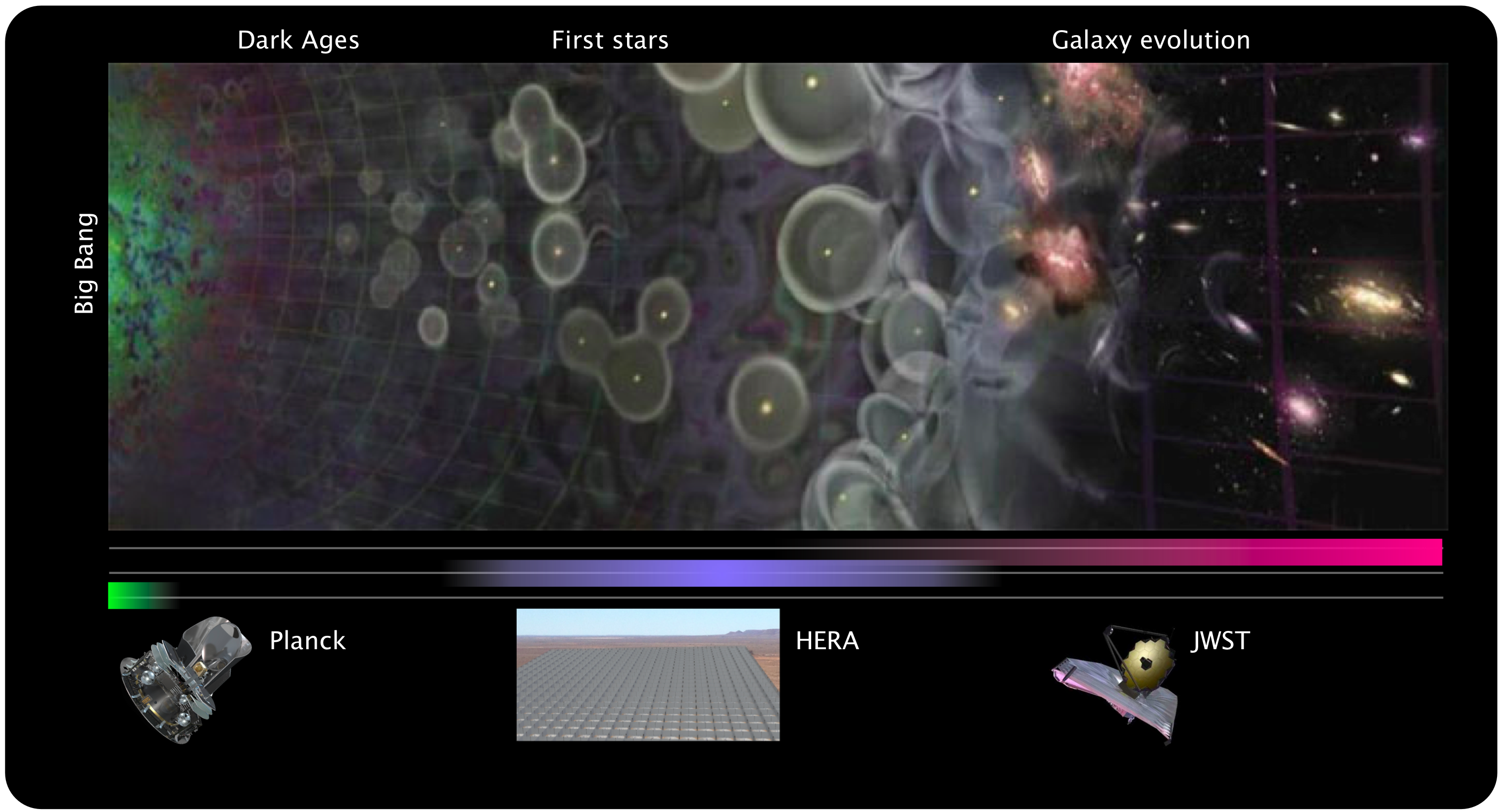The case for cosmic reionization:
Cosmic reionization corresponds to the epoch when the neutral intergalactic medium (IGM) is reionized by the first luminous objects (stars, black holes). Probing this last unexplored phase of cosmic evolution was emphasized by the astronomy community in the 2010 Decadal Survey the primary area with extraordinary ‘discovery potential’ in the study of cosmic structure formation:
‘A great mystery now confronts us: When and how did the first galaxies form out of cold clumps of hydrogen gas and start to shine—when was our “cosmic dawn”? Observations and calculations suggest that this phenomenon occurred when the universe was roughly half a billion years old, when light from the first stars was able to ionize the hydrogen gas in the universe from atoms into electrons and protons—known as the epoch of reionization.’
The HERA program aims to answer the primary questions: what objects first lit up the Universe and reionized the neutral IGM? Over what redshift range did this occur? How did the process proceed, leading to the large scale galaxy structure seen today?
The HERA roadmap was the top-ranked science program from the Astro2010 Radio, Millimeter, and Submillimeter panel report and was Mentioned as both a Discovery Area as well as a key to exploring Origins. Two out of three focus areas of the top level Decadal Report. The roadmap begins with the completion of the Precision Array for Probing the Epoch of Reionization (PAPER) and Murchison Widefield Array (MWA) experiments. PAPER and MWA are ‘spearhead projects’ that lead to a single . In parallel, other development programs are being pursued in general DSP and large N array data processing.
Decadal Survey
Decadal white papers


